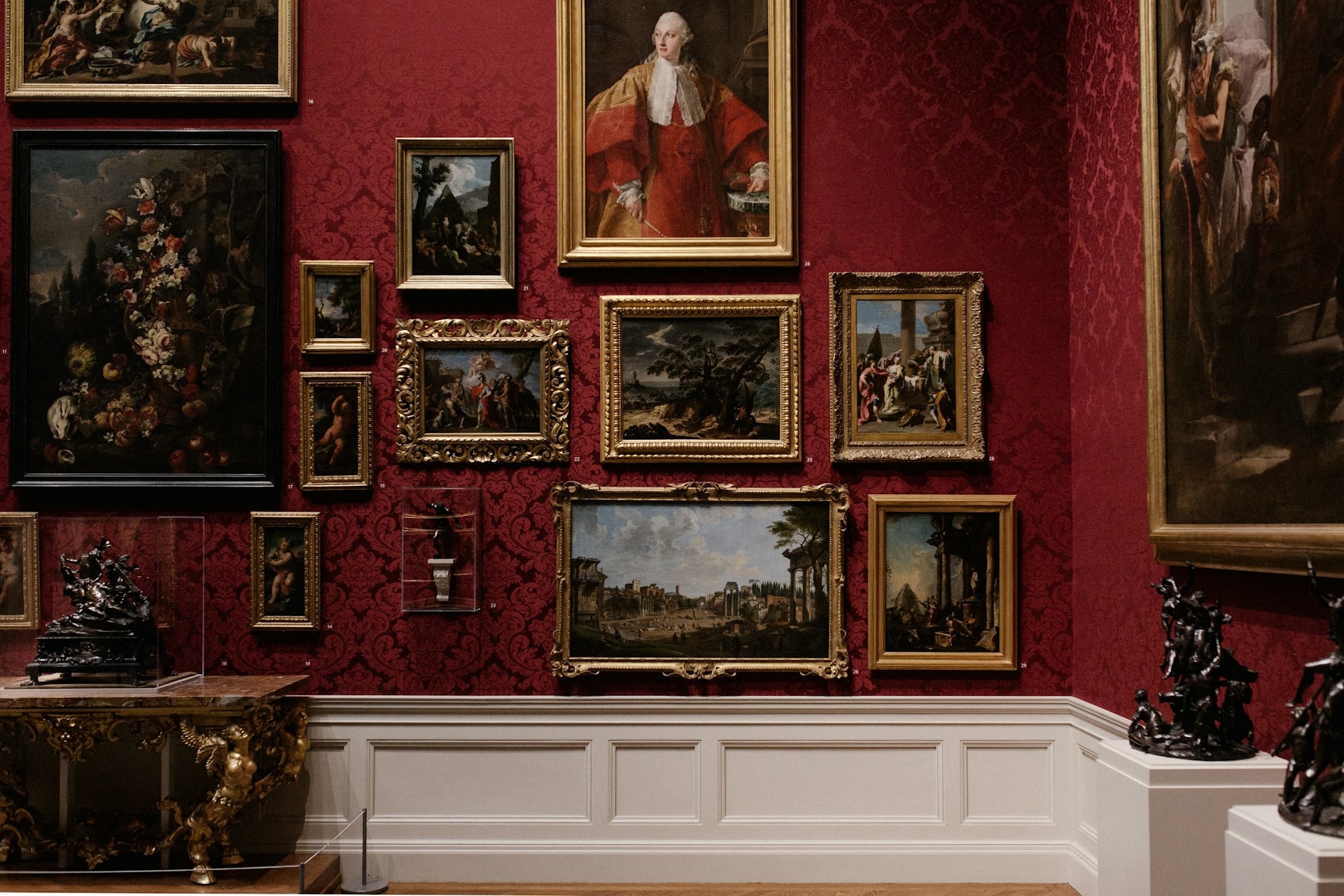In the increasingly digital world of 2024, museums across the United Kingdom are embracing innovative techniques to captivate and educate a global audience through virtual exhibitions. As traditional brick-and-mortar institutions, museums have faced the challenge of extending their reach beyond physical boundaries. This article explores the cutting-edge methods that UK museums can employ to create immersive, engaging, and accessible virtual exhibitions. These strategies not only ensure that culture and heritage are preserved but also make them available to a wider audience.
Utilizing Augmented Reality (AR) and Virtual Reality (VR)
Augmented Reality (AR) and Virtual Reality (VR) are transforming the way audiences experience exhibitions. By blending the physical and digital worlds, these technologies offer a dynamic and interactive way to explore museum collections.
Also read : How can UK charities leverage AI to predict donor behavior and optimize fundraising efforts?
AR overlays digital elements onto the physical world, accessible through smartphones, tablets, or AR glasses. For instance, UK museums can create AR applications that allow visitors to point their devices at an exhibit to receive additional information, watch related videos, or view reconstructions of ancient artifacts. This enriches the visitor experience by providing layers of context and storytelling that are not possible with traditional displays alone.
VR, on the other hand, creates a completely immersive virtual environment. Museums can develop VR tours that transport visitors to historical sites, reconstructed cities, or even fictional worlds inspired by their collections. Using VR headsets, users can explore these environments interactively, offering a sensation of presence that is unparalleled by other media. For example, a VR tour of the British Museum’s Egyptian collection could allow users to walk through a virtual reconstruction of an ancient Egyptian temple, providing a deeply engaging educational experience.
Also to see : How can UK-based fitness apps use AI to offer personalized workout plans?
By integrating AR and VR, UK museums can create virtual exhibitions that are not just informative but also emotionally and intellectually stimulating. These technologies help to democratize access to culture, allowing anyone with an internet connection and a compatible device to explore world-class collections from the comfort of their own home.
Leveraging 3D Scanning and Printing
3D scanning and printing technologies are another innovative approach that can revolutionize virtual exhibitions. 3D scanning enables museums to create highly detailed digital replicas of physical objects, which can be used in virtual exhibits or educational platforms.
With 3D scanning, artifacts can be captured in meticulous detail, preserving every texture and nuance. These digital replicas can then be integrated into virtual exhibitions, where visitors can interact with them in ways that are not possible with physical artifacts. For instance, users can rotate, zoom in, and examine artifacts from all angles, gaining insights that would be difficult to achieve in a traditional museum setting.
Additionally, 3D printing offers the potential to create physical replicas of digital artifacts. These replicas can be used in educational programs, outreach initiatives, or even as part of a museum’s retail offerings. Imagine a school program where students can handle 3D printed replicas of fossils or ancient tools, providing a tangible connection to the past. This hands-on experience can significantly enhance learning and engagement.
Furthermore, 3D technologies can aid in the preservation of fragile or deteriorating artifacts. By creating digital and physical copies, museums ensure that these cultural treasures can be studied and appreciated for generations to come, even if the original artifacts are no longer accessible.
By adopting 3D scanning and printing, UK museums can create virtual exhibitions that offer a depth of interaction and engagement that is unparalleled. These technologies open up new possibilities for education, preservation, and outreach, ensuring that cultural heritage is both accessible and engaging to a global audience.
Implementing Interactive Storytelling
Interactive storytelling is a powerful tool that can bring virtual exhibitions to life. By combining multimedia elements such as text, audio, video, and graphics, museums can create compelling narratives that guide visitors through their collections in an engaging and memorable way.
One effective approach is to develop interactive narratives that allow visitors to choose their own path through an exhibition. For example, a virtual exhibit on the Tudor period might offer different storylines based on the perspectives of various historical figures. Visitors could choose to explore the life of Henry VIII, Anne Boleyn, or a commoner living in Tudor England, each storyline offering unique insights and experiences.
Interactive storytelling can also include gamified elements, such as quizzes, puzzles, and challenges that encourage visitors to engage more deeply with the content. For instance, a virtual exhibit on the Industrial Revolution could include a series of interactive challenges that simulate the invention process, allowing visitors to experience the challenges and triumphs of historical inventors.
Another innovative technique is the use of digital storytelling platforms that integrate user-generated content. Museums can invite visitors to contribute their own stories, experiences, or interpretations related to the exhibit’s themes. This participatory approach not only enriches the exhibition with diverse perspectives but also fosters a sense of community and connection among visitors.
By implementing interactive storytelling, UK museums can create virtual exhibitions that are not only informative but also deeply engaging and memorable. These techniques help to transform passive viewing into active participation, ensuring that visitors leave with a deeper understanding and appreciation of the subject matter.
Utilizing Artificial Intelligence (AI) and Machine Learning
Artificial Intelligence (AI) and machine learning are transforming the way museums curate and present their collections. These technologies can analyze vast amounts of data to uncover patterns, trends, and connections that might not be immediately apparent to human curators.
One application of AI in virtual exhibitions is the creation of personalized experiences. By analyzing visitor behavior and preferences, AI can recommend specific exhibits, artifacts, or interactive elements tailored to individual interests. For example, a virtual museum platform could use AI to analyze a visitor’s interaction history and suggest a customized tour based on their interests in a particular historical period or art style.
Machine learning can also enhance the curation process by identifying connections between seemingly unrelated artifacts. For instance, an AI algorithm might analyze a museum’s entire collection and discover thematic or stylistic links between artifacts from different cultures or time periods. These insights can be used to create innovative and thought-provoking virtual exhibitions that offer new perspectives on familiar subjects.
Another exciting application of AI is in the realm of virtual assistants and chatbots. Museums can develop AI-powered virtual guides that provide real-time information, answer questions, and offer personalized recommendations. These virtual guides can enhance the visitor experience by providing context, answering queries, and even engaging in conversations about the exhibit’s themes.
By utilizing AI and machine learning, UK museums can create virtual exhibitions that are not only more engaging and personalized but also more insightful and innovative. These technologies offer new ways to curate, present, and explore cultural heritage, ensuring that virtual exhibitions remain dynamic and relevant.
Embracing Social Media and Digital Marketing
In the digital age, social media and digital marketing are essential tools for promoting virtual exhibitions and engaging with a global audience. By leveraging these platforms, museums can reach a wider audience, foster community engagement, and drive traffic to their virtual exhibits.
Social media platforms such as Instagram, Twitter, and Facebook offer opportunities to share sneak peeks, behind-the-scenes content, and interactive features related to virtual exhibitions. For instance, museums can create short videos or live-streamed events that showcase highlights from the exhibition, offer curator insights, or feature guest speakers and experts. These engaging content formats can capture the interest of a broader audience and encourage them to explore the full virtual exhibit.
Digital marketing strategies, such as search engine optimization (SEO), pay-per-click (PPC) advertising, and email marketing, can also drive traffic to virtual exhibitions. By optimizing their websites and content for search engines, museums can ensure that their virtual exhibits are easily discoverable by users searching for related topics. PPC advertising can target specific demographics and interests, increasing the visibility of the exhibition to potential visitors. Meanwhile, email marketing campaigns can keep subscribers informed about new exhibits, events, and updates, fostering a sense of connection and engagement.
Collaborations with influencers and content creators can also amplify the reach of virtual exhibitions. By partnering with individuals who have a strong following and influence within relevant communities, museums can tap into new audiences and generate buzz around their virtual exhibits. These collaborations can take the form of sponsored posts, guest blog articles, or co-hosted live events, providing multiple touchpoints for potential visitors.
By embracing social media and digital marketing, UK museums can ensure that their virtual exhibitions are not only well-promoted but also engaging and accessible to a global audience. These strategies help to create a sense of community, foster engagement, and drive traffic, ensuring that virtual exhibitions reach their full potential.
UK museums are at the forefront of an exciting digital transformation, using innovative techniques to create virtual exhibitions that captivate and educate audiences worldwide. By utilizing AR and VR, leveraging 3D scanning and printing, implementing interactive storytelling, harnessing AI and machine learning, and embracing social media and digital marketing, museums can create virtual experiences that are immersive, engaging, and accessible.
These strategies not only preserve cultural heritage but also democratize access to it, allowing anyone with an internet connection to explore and appreciate the rich history and diverse cultures showcased by UK museums. As we continue to navigate an increasingly digital world, these innovative techniques will ensure that museums remain relevant, dynamic, and impactful for generations to come. So, let us embrace this digital renaissance and explore the endless possibilities of virtual exhibitions in the UK!











